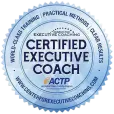
Know Yourself, Know Your Competition
“If you know the enemy and know yourself, you need not fear the result of a hundred battles.”
Sun Tzu’s advice isn’t just for generals—it’s a lifeline for small business owners. To build a business that lasts, you need to understand two things: your strengths and weaknesses, and the strategies your competitors are using. Without that clarity, you risk wasting time, money, and energy on decisions that take you further from your goals.
Take Poppy’s Pie Shop, for example, a small-town bakery known for its farm-to-table pies. When a new competitor opened across the street offering trendy, health-conscious desserts, the owners had a choice to make. Should they change their menu to compete? Double down on what made them special? Without understanding their own strengths—or the competitor’s game plan—they’d be making a blind guess.
Knowing yourself and knowing your competition helps you avoid reactive decisions and focus on what truly matters. Let’s talk about how you can apply this principle to save your business.
Strong Teams Start With Self-Aware Leaders
Good leadership starts with knowing yourself. What are you good at? Where do you struggle? The hardest part is being honest about your weaknesses because they’re often the things we don’t want to see. That’s why you need feedback from someone you trust—a mentor, coach, or another business owner who can give you an outside perspective.
It’s just as important to understand your team. At Maple Valley Inn, the owner noticed the front desk staff were great at creating warm, personal connections with guests, but they struggled to upsell spa packages. Instead of blaming them for low sales, the owner leaned into what they did well and brought in training to help the staff make recommendations in a way that felt natural. Guests appreciated the thoughtful suggestions, and spa bookings increased without losing the personal touch that kept customers coming back.
When you understand your strengths and weaknesses—and those of your team—you can make decisions that play to your strengths instead of fighting against them.
Challenge: Ask someone you trust for honest feedback about what you’re doing well and where you need to improve. Pick one area to focus on, and make a plan to address it.
Outsmart Your Competition by Understanding Their Strategy
If you don’t know what your competitors are doing, you can’t compete with them effectively. It’s like trying to play a game without knowing the rules—you’re bound to lose.
When Poppy’s Pie Shop started noticing that their Saturday sales were dipping, they asked regular customers for feedback. That’s when they learned that a new bakery nearby was drawing customers with gluten-free and keto-friendly options. Instead of scrambling to copy the competitor’s menu, the owners leaned into what made Poppy’s special: authentic, farm-to-table pies made with local ingredients. They launched a “Seasonal Harvest” campaign with flavors like spiced pear and cranberry walnut, drawing customers back with something they couldn’t find anywhere else.
Sometimes it takes a nudge—like declining sales or customer feedback—to realize what your competition is up to. But the sooner you understand their strengths and weaknesses, the sooner you can position yourself to win.
Challenge: Research one competitor this week. Visit their store or website, read reviews, and talk to their customers if you can. Write down one thing they do well and one gap you could fill in your own business.
Differentiate to Dominate
Your marketing works best when it highlights what makes you unique. Customers won’t remember you if you’re just a cheaper version of someone else—they’ll remember you for what only you can offer.
Turning Pages, a small-town bookstore, faced stiff competition when a big-box chain moved into the area. The chain offered steep discounts, but it didn’t build connections with the community. Turning Pages leaned into its strength: creating a sense of belonging. They hosted weekly book clubs and author readings and partnered with Morning Roast Café to offer free coffee during events. Customers didn’t just shop there—they became part of a community that valued relationships over discounts.
When you focus on what makes your business special, you’re not just competing—you’re creating something customers can’t find anywhere else.
Challenge: Write down three things your business does better than anyone else. Then look at your marketing. Are those strengths front and center? If not, pick one way to highlight them this week.
Understand Your Numbers, Save Your Business
You can’t make good decisions if you don’t know where your money is going. Which products make you the most money? Which ones barely break even? If you don’t know the answers, you’re flying blind.
Hearthstone Café learned this lesson the hard way. When supply costs spiked unexpectedly, the owner realized profits were slipping. After reviewing their menu and expenses, they discovered that breakfast sandwiches were their biggest moneymaker, while afternoon snacks were dragging them down. They shifted their focus, expanding their breakfast offerings and trimming back on underperforming items. Those changes stabilized the café’s finances and boosted profits.
Understanding your numbers isn’t about spreadsheets—it’s about knowing what keeps the lights on.
Challenge: Pick one product or service you offer. Track its costs, revenue, and profit margins for a month. Use that data to decide whether it’s worth expanding, adjusting, or cutting.
Listen to Your Customers to Build Loyalty
Your customers are constantly telling you what they want—you just have to listen.
At Whistle & Jingle Toy Shop, the owner didn’t realize how overwhelmed parents were during holiday shopping until one customer blurted out, “I don’t even know where to start.” That moment sparked an idea. The team created a “Top Picks for Busy Parents” display, grouping toys by age and interest, and offered complimentary gift wrapping. It was a small change, but it made a big impact. Parents felt cared for, and many returned year after year because the toy shop solved their problem instead of adding to their stress.
Listening to your customers doesn’t have to be complicated. Pay attention to what they say, ask questions, and use their feedback to make small changes that matter.
Challenge: Talk to five customers this week. Ask them what they love about your business and what they’d like to see improve. Write down their answers, and use one idea to make a change.
Stay Ahead of the Curve
The business world changes fast. If you wait until you’re struggling to adapt, you’re already behind. The best businesses don’t just react to change—they anticipate it.
Flex & Flow, a neighborhood gym, didn’t wait for members to demand virtual classes. They saw the trend growing and launched live-streamed workouts and a library of on-demand videos. While other gyms scrambled to adjust during the pandemic, Flex & Flow was already ahead of the curve.
You don’t need to chase every trend, but you do need to pay attention to what’s coming. Staying ahead means you’re ready to adapt before your competitors.
Challenge: Think about one trend or customer request you’ve noticed recently. What’s one small way you could test it out, like offering a new product, running a promotion, or talking to customers for feedback?
Build a Business That Stands the Test of Time
Running a business is never easy. It’s not supposed to be. But the truth is, most small businesses don’t fail because of lack of effort—they fail because of lack of focus.
When you understand your strengths, your competition, and your customers, you can cut through the noise and make decisions that matter. Don’t try to do everything. Focus on what makes your business special, deliver it consistently, and stay curious about what’s happening around you.
You started this business because you believed in something. With clarity and determination, you can protect that vision, grow your business, and build something that stands the test of time.




